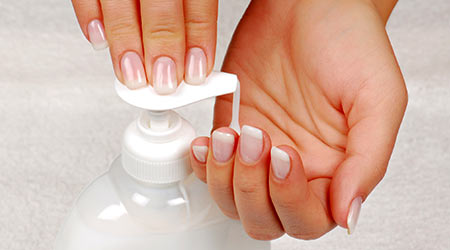
Contributed by DebMed.
When it comes to reducing the prevalence of healthcare-associated infections (HAIs), hand hygiene is key. As one of the most serious, yet preventable threats to patient safety in healthcare facilities, HAI prevention through proper hand hygiene is a top concern among healthcare institutions. To help combat HAIs in hospital facilities, DebMed offers healthcare workers best practices for hand hygiene.
“With roughly one-in-25 hospital patients contracting an HAI every day[i], proper hand hygiene is a critical issue for healthcare institutions nationwide,” said DebMed Vice President of Marketing Ron Chappuis. “By spreading awareness of hand hygiene best practices, we hope to help reduce the spread of HAIs.”
Based on the WHO’s “5 Moments for Hand Hygiene,” DebMed offers the following hand-hygiene tips for healthcare professionals:
1. When entering a patient room, apply an effective hand sanitizer. Use an alcohol-based sanitizer or rub that contains at least 60 percent alcohol to decrease transient bacteria and reduce the risk of cross-contamination between patient rooms.
2. Clean hands before performing any type of aseptic procedure to protect the patient against harmful pathogens. This can include germs carried by the healthcare professional or living on the patient’s own body.
3. Clean hands after exposure to, or the threat of exposure to, bodily fluids. This will protect the healthcare worker from the patient’s germs and limit the spread of infection-causing pathogens.
4. Clean hands after touching a patient or any of the patient’s immediate surroundings, such as the patient’s clothes or gown, hospital bed or exam chair.
5. Clean hands after touching any object in the patient’s room, such as high-touch surfaces such as door handles, bed railings, chairs, countertops, etc.
To ensure healthcare employees are complying with proper hand-hygiene protocols, implement an electronic hand hygiene compliance system that has been clinically shown to reduce HAIs.

 The Down and Dirty on Cleaning in Virus Season
The Down and Dirty on Cleaning in Virus Season How Surfactant Use is Expanding in Commercial Cleaning
How Surfactant Use is Expanding in Commercial Cleaning Clean Buildings Conference
Clean Buildings Conference